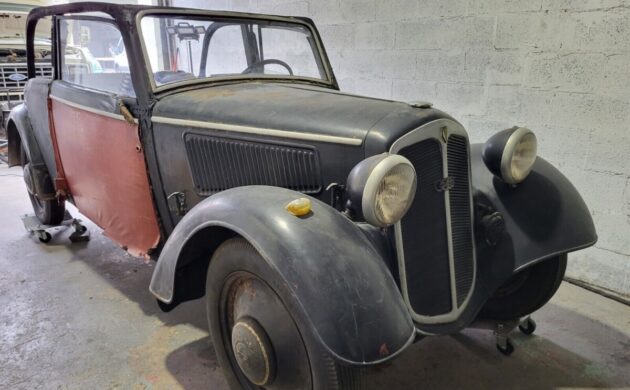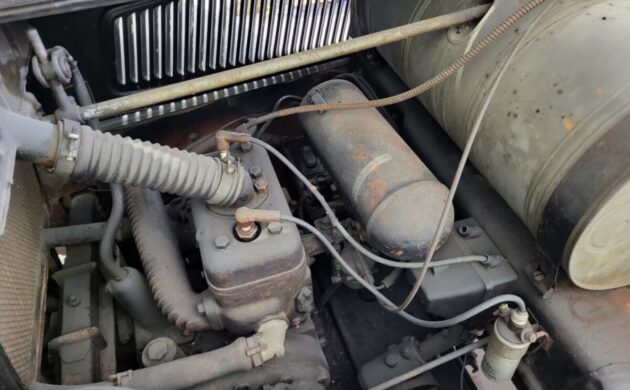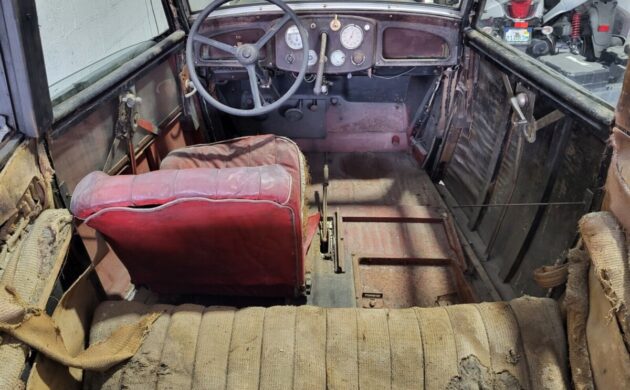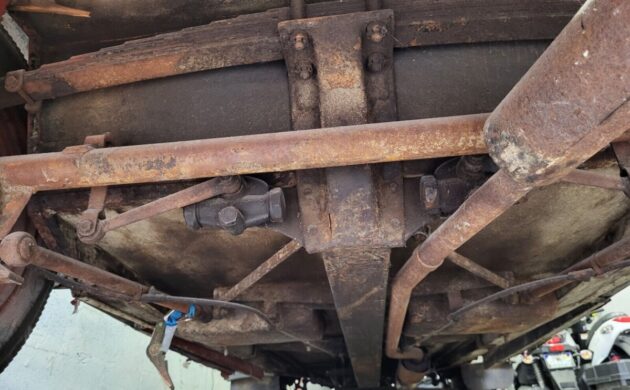DKW was one of the founding members of Auto Union in a transaction precipitated in 1932. Its forté was motorcycles and small cars; the other three brands staked out the medium car segment (Wanderer), the larger family car segment (Audi), and the luxury niche (Horch). Once the stage was set for this tableau, Auto Union branded its cars with four rings, symbolizing the companies’ solidarity. DKW (its German name translates loosely to “damp car”) was facile with two-stroke engines, a by-product of its motorcycle heritage. Consequently, every DKW car was equipped with a two-stroke, from its first in 1928 to its last in 1966. Here on eBay is a rare surviving 1939 DKW F8 cabriolet, bid to $500, reserve not met. This project car is located in Miami, Florida. Decades of storage mean it doesn’t run, but it does roll and the gearshift works. Don’t get too frisky pushing it onto a trailer, though – the mechanical brakes need to be rebuilt. Thanks to T.J. for this snazzy tip!
DKW’s “F” series cars were first produced in 1931 – the “F” meaning “front”, as all the cars were front-wheel drive. The F8 was introduced in 1939. Three models were offered: the Reichsklasse (base), the Meisterklasse (mid level), and the Luxus Cabriolet. Body parts were mostly wood with some steel except for the Luxus, which contained more steel. The engine in the Reichsklasse would be a water-cooled 589 cc two-stroke paired with a three-speed transaxle, good for 18 hp. This seller says his car has the Meisterklasse 690 cc engine, good for another couple ponies. It’s lacking front bumpers, which may indicate it is the base model instead. The solid wheels were common on both lesser models, but the Luxus came with wires. So Job Number One is confirming which F8 model we have here. You’ll either max out at 50 mph or slightly higher.
The interior seats four and the cabriolet top is supported by fixed window frames. The gearshift will surprise you: it’s the handle protruding from the dash. Check out this video showing how to row through the gears. A few parts are missing, including a door handle and the passenger’s seat.
The frame is decent, and the seller says the wood floors are solid as well. Still, the buyer is in for a restoration of a rare car with scarce resources available. The UK club is probably a buyer’s best bet. How much to pay? There isn’t much headroom for expenses. This Meisterklasse cabriolet failed to sell at $16,250 a few months ago. The top-of-the-line Luxus is worth about $25k. I hope this DKW isn’t parted out, but it will take a brave soul to tackle her!






“…translates loosely to “damp car”…”
The German “dampf” is “steam”, in that a steam engine is a “dampfmaschine”; they may have started with steam and then moved on to strokers.
That is correct.